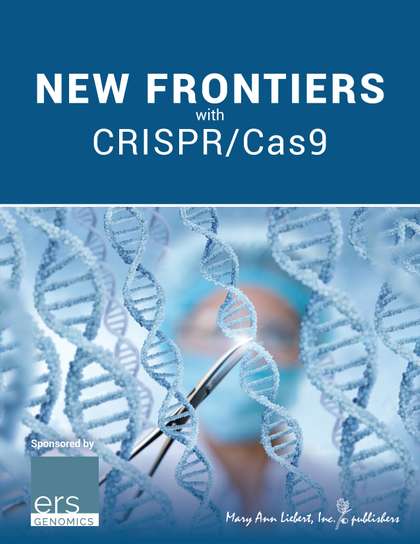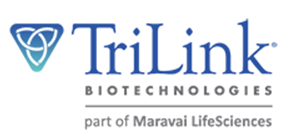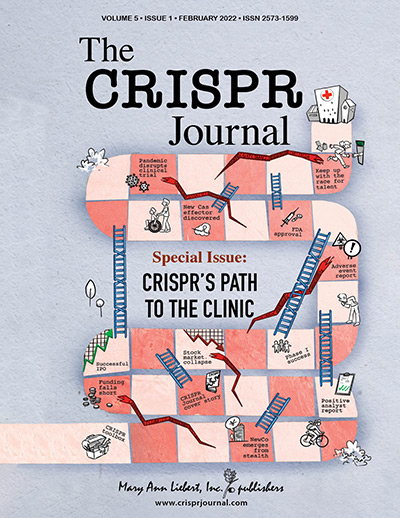Announcements
-
CALL FOR PAPERS
Featured Content
Webinar
Safer Gene Editing for Cell Therapies Using INDUCE-seq
In this webinar, Dr. Simon Reed presents INDUCE-seq, a precise method for testing off-target editing during therapeutic development and treatment follow up. Attendees will hear the results of a study that used INDUCE-seq and duplex sequencing to assess off-target effects following CRISPR-Cas9-based gene editing of five well-studied genetic targets.
Watch NowSponsored by: Broken String Biosciences
Webinar
Getting Started with mRNA-based Therapeutics — Myths, Considerations, and Characterization
Join this "Getting started with mRNA-based therapeutics" roundtable to explore mRNA challenges, including usability, stability, and technological limits. Gain insights into developmental considerations for clinic-bound constructs. Explore the crucial role of characterizing and analyzing mRNA in the early stages of development.
Watch NowSponsored by: TriLink Biotechnologies

Webinar
Getting Started with mRNA—Increasing Your Probability for Success
This webinar will provide a timely introduction to the world of mRNA-based therapeutics, encompassing their design, synthesis, modifications, and applications. A deeper dive into the optimization of mRNA design and in vitro transcription processes will unveil strategies for streamlining mRNA manufacturing. Whether you're new to mRNA research or seeking to enhance your existing knowledge, this webinar will equip you with the tools and insights needed to accelerate your journey toward successful mRNA-based projects.
Watch NowSponsored by: TriLink Biotechnologies

Webinar
Next-Generation mRNA Design: Increasing mRNA potency with a New Cap Analog
In this webinar, Dr. Chunping Xu, Director of Chemistry R&D for TriLink Biotechnologies, will discuss the latest progress in next-generation mRNA design. Attendees will learn about how major capping strategies differ in their manufacturing costs, time, complexity, and availability. In addition, Dr. Xu will show how TriLink is continuing to innovate in this technology as the company debuts a novel Cap1 structure.
Watch NowSponsored by: TriLink Biotechnologies

Webinar
CRISPR Knockout Guide RNA Design for Optimal Function and Specificity
CRISPR-Cas9 is a potent and easily reprogrammable tool for RNA-targeted induction of gene knockouts. Designing guide RNA (gRNA) to create double-strand breaks (DSB) at a specific genomic location can seem straightforward (e.g. simply look for a PAM site), but there are many factors to consider for ensuring that the genome editing occurs precisely at the desired locus while avoiding off-target effects.
In this webinar hosted by The CRISPR Journal, presenter Emily Anderson, Principal Scientist, Horizon Discovery, will describe the development of the Dharmacon™ Edit-R™ CRISPR algorithm and the selection of predesigned guide RNAs for functional and highly specific knockouts.
Watch NowSponsored by: Horizon Discovery

Webinar
New Tools for Analysis of CRISPR Editing Events
Genome engineering enables the manipulation of complex genomes down to the nucleotide level. CRISPR is a powerful genome editing tool used in biomedical research for generating custom-edited cell and pre-clinical animal models. Targeted deep sequencing enables the detection and quantification of on-target editing events in pools of cells or clonal populations. However, the large amounts of data generated by targeted deep sequencing can be difficult to interpret and quickly analyze.
In this webinar hosted by The CRISPR Journal, Shondra Pruett-Miller presents a novel Python-based computer program called CRIS.py that allows the easy analysis of multiple types of editing events. She will show examples of how rapid deep sequence analysis has guided experimental design, leading to high-efficiency genome editing in a broad range of applications. Additionally, her team has developed a new sequencing-based assay for rapidly validating hits from pooled KO CRISPR screens.
Watch NowSponsored by: ERS Genomics

Webinar
Stealth Mission: Novel mRNA Vaccine Delivery System
The recent success of mRNA vaccines during the COVID pandemic has vaulted this technology from its humble research beginnings to international recognition by the scientific and medical community as a groundbreaking measure in combating a host of diseases. The delivery of mRNA molecules has been dominated by the use of lipid nanoparticles (LNPs). However, while LNPs have proven effective, they provide investigators with several challenges—most importantly, the activation of unwanted cell-mediated immune responses. Alternative mRNA delivery systems offer the capability to stealthily deliver nucleic acids to their target and evade the immune system while generating a potent antigen-specific CD8+ T-cell response.
In this final webinar of a four-part series on RNA, cohosted by The CRISPR Journal and GEN, we will delve into the delivery question surrounding mRNA research and therapeutics. Professor Helen McCarthy, PhD will review the key issues around RNA delivery and describe a novel peptide-based drug delivery system that her company has developed. This system is based on a sequence of 30 amino acids and condenses anionic cargo, such as mRNA, irrespective of size, into nanoparticles for highly efficient entry into cells.
Watch NowSponsored by: TriLink Biotechnologies

eBook
NEW FRONTIERS with CRISPR/Cas9
Precision gene editing has a long reach and will impact many facets of life. Beyond human disease applications, gene editing is being used to create greener chemistries. We can now enable the use of a wider range of microbes to create industrial products that pre-CRISPR required precious natural resources. To further support a sustainable future, gene editing is being used to modify crops to better withstand the changing world climate conditions and increase food production. And of course, gene editing is likely to become a major player in the treatment of genetic diseases. The potential is limitless.
This exciting new eBook covers:
- Diversification of the CRISPR Toolbox: Applications of CRISPR-Cas Systems Beyond Genome Editing
- Nuclease-Deficient Clustered Regularly Interspaced Short Palindromic Repeat-Based Approaches for In Vitro and In Vivo Gene Activation
- Finding Her Niche: An Interview with Emmanuelle Charpentier
- CRISPR/Cas9 as a Platform for Vaccine Development
- Cas9 or Cas12?
Sponsored by: ERS Genomics






